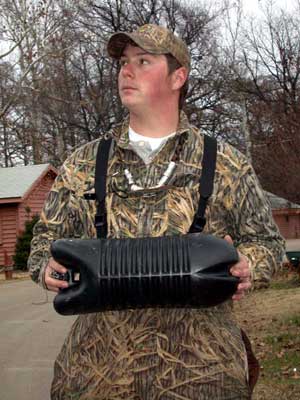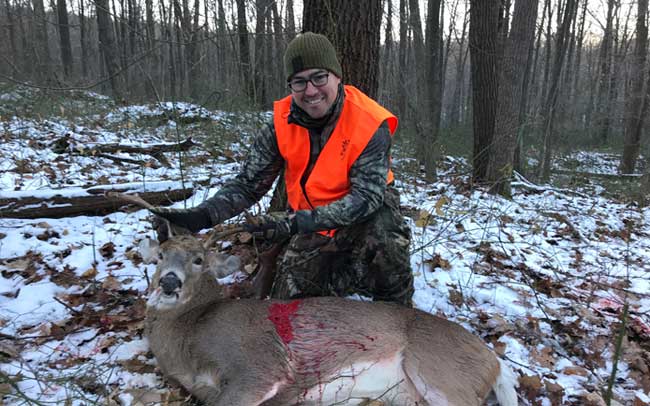Will Lindsey | Mossy Oak ProStaff
 One of the decoys that we use that probably not many people know about is called Filler Killer decoys that are available from www.cypresscreekonline.com. The Filler Killer doesn’t look like a decoy, but instead resembles a big black jug. It doesn’t have a keel like most decoys have. When there’s a light wind of no more than 1 or 2 mph, these Filler Killer decoys move better and more than other decoys do. When a high-flying duck sees that black object moving in the decoy spread, I don’t know why, but that duck will come in like he's been drawn in by a magnet.
One of the decoys that we use that probably not many people know about is called Filler Killer decoys that are available from www.cypresscreekonline.com. The Filler Killer doesn’t look like a decoy, but instead resembles a big black jug. It doesn’t have a keel like most decoys have. When there’s a light wind of no more than 1 or 2 mph, these Filler Killer decoys move better and more than other decoys do. When a high-flying duck sees that black object moving in the decoy spread, I don’t know why, but that duck will come in like he's been drawn in by a magnet.
I first learned about these decoys when I was hunting on Reelfoot Lake in northwest Tennessee. A local fellow there was making this big black jug, and that’s where I saw it being so effective. Really and truly, to take ducks your decoy spread is as important, if not more important, than your calling.
Primarily, we use our calling to get the ducks’ attention and cause them to look at our decoys. We've learned that if our decoy spread is set up right, and we get the ducks’ attention with some fairly-loud calling, the ducks will usually come down. If they don’t want to come down, they’ll keep on flying. For that reason, I know that the decoy spread is critical to getting the ducks within gun range, after you’ve gotten their attention with some loud calling.
We primarily use three different calls to get the ducks to come to the decoys. I blow:
- a Dead Ringer call made by Flextone Game Calls, when the birds are high.
- a Jimmy King wooden call, made by a local call maker, when ducks are fairly close to our blind. Although I can get loud on this call, because it’s made of wood, it seems to have a softer sound. I've also found it’s much easier to work the ducks when they're getting closer to the blind with this call.
- a Daisy Cutter made by Rich-N-Tone Calls for my finishing call. This call has a lot of rasp to it, and I just like it when the ducks are in close.
Decoying ducks on small lakes and ponds is just as important. Just be sure to spread them out and not use as many.
Twenty-three-year-old Will Lindsey from Jackson, Tennessee, has been hunting waterfowl for 12 years. He just graduated from the University of Tennessee at Martin with a degree in wildlife and fisheries. While in school, Lindsey could hunt ducks for 56 days before his classes. But since he’s taken a real job, he’s having difficulty hunting as many days as he would like. His favorite camo is Mossy Oak Bottomland - not just for duck hunting but for any type hunting he does. A Mossy Oak Pro for about a year, Lindsey hunts waterfowl near the Moss Island State Wildlife Management Area (WMA), north of Memphis and Jackson in the Hales Point region.



























